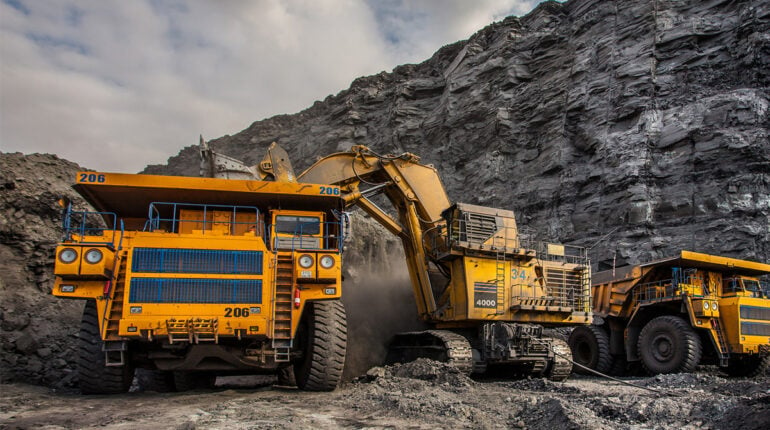
The Economics of Stone Mining: Balancing Profitability with Responsibility
The global stone mining industry now stands at a decisive moment, where pure profit motives must align with environmental stewardship and community responsibility. With the stone mining and quarrying market valued at USD 409 billion in 2023 and projected to reach USD 612 billion by 2033, the pressure is clear: operators must deliver growth without ignoring sustainability.
Modern stone mining operators discover that sustainable practices don't just fulfill ethical obligations; they create long-term economic advantages that traditional methods cannot match. Forward-thinking companies implement comprehensive strategies that maximize profitability while minimizing environmental impact, creating value for shareholders, communities, and ecosystems alike.
Forward-looking companies like Astha Infradevelopers show that responsibility and profitability are not opposites. By integrating sustainable practices with advanced quarrying techniques, they prove that ethical mining fuels both economic success and long-term industry leadership.
Economic Foundations of Modern Stone Mining
Market Growth and Revenue Potential
Global demand keeps rising as urbanization and infrastructure projects accelerate. The construction sector accounts for over 42% of demand, ensuring consistent growth for aggregates and dimension stones. Operators with large-scale facilities, like Astha Infra’s 6.9 million tonnes per annum capacity at Mahendragarh, highlight the sheer potential of organized, well-equipped stone mining.
Crushed stone dominates the market with over 43% share, while premium dimension stones secure high-value opportunities in architecture. Mechanized surface mining (73.6% of extraction) continues to drive efficiency and scale. Advanced quarrying operations generate substantial revenue streams through diversified product offerings. Crushed stone dominates with a 43.2% market share, while dimension stones command premium pricing for architectural applications. Surface mining operations, representing 73.6% of extraction activities, optimize cost structures through mechanized processes and efficient resource utilization.
Optimizing Cost Structures
Technology investments transform cost-efficiency. Mobile crushing plants offer 20-50% cost savings compared to fixed installations by eliminating transportation expenses and reducing infrastructure requirements. These systems prove particularly valuable for remote operations, where material movement costs can represent up to 50% of total operational expenses. At Astha Infra, smart deployment of such solutions ensures maximum yield while keeping operational costs under control.
Sustainable Practices: Where Responsibility Meets Profit
Compliance as Competitive Strategy
Regulatory compliance no longer slows growth; it powers it. In India, penalties for violations already exceed ₹34.3 crores since 2020, but leaders like Astha Infradevelopers treat compliance as a proactive strategy. By allocating ₹30 lakhs in capital costs and ₹18 lakhs annually for recurring environmental expenses, Astha Infra ensures smooth operations while avoiding costly penalties.
Dust suppression, water recycling, and noise-control technologies are not just good for the planet; they also create safer, more efficient workplaces.
Resource Efficiency and Circular Economy
Modern methods such as precision drilling, controlled blasting, and systematic benching maximize resource recovery. Waste is no longer waste; stone dust, overburden, and byproducts become inputs for construction, land reclamation, and even agriculture. Astha Infra actively integrates such circular economy principles to turn byproducts into new revenue streams.
Waste recycling initiatives transform operational byproducts into revenue streams. Stone dust and overburden find applications in construction materials, land reclamation projects, and agricultural soil amendments. Companies implementing circular economy principles reduce disposal costs while generating additional income from previously discarded materials.
Technology Integration for Profitability
Automation, IoT, and AI are redefining mining economics. Autonomous haulage and predictive maintenance increase uptime while lowering labor and insurance costs. Real-time monitoring through smart sensors helps operators like Astha Infra cut downtime by up to 40%.
On the processing side, energy-efficient crushers, automated screening, and IS 383:2016-compliant testing ensure consistent product quality. By prioritizing certified standards, companies capture premium markets and secure preference from large contractors.
Community and Social Responsibility
Local Growth
Responsible mining delivers more than materials; it uplifts communities. At Astha Infra, operations generate direct jobs, strengthen supply chains, and support regional development through infrastructure like roads, power, and water facilities. These contributions boost property values and improve overall living standards.
Social License to Operate
Community engagement is no longer optional; it’s the foundation of long-term success. Companies investing in schools, healthcare, and local infrastructure win community trust and avoid costly delays from opposition. Astha Infra builds this trust through transparency, dialogue, and consistent social investment.
Financial Performance Through Responsibility
Risk Mitigation
Sustainable operators reduce risk exposure and gain financing benefits. Strong ESG records attract investors and unlock favorable lending terms. Preventive environmental actions, such as early-stage habitat restoration, cost significantly less than late remediation, strengthening both financial and environmental resilience.
Market Premiums
Certified sustainable materials command price premiums. Green building projects increasingly require eco-compliant inputs, while global markets demand traceable sourcing. Companies integrating blockchain-based traceability access these high-value segments, future-proofing their operations.
Future-Proofing Stone Mining
Regulatory Anticipation
Instead of reacting to new rules, industry leaders adopt early. Real-time monitoring and automated reporting reduce compliance overhead while building credibility with regulators.
Market Evolution
As consumer preferences shift toward sustainability, certified materials gain traction. Export opportunities particularly favor eco-certified suppliers, positioning forward-thinking operators like Astha Infra at the forefront of global demand.
Conclusion: Building a Profitable and Responsible Future
The economics of stone mining make one fact clear: profitability and responsibility grow stronger together. Sustainable strategies not only lower costs but also unlock new revenue, reduce risk, and win market premiums. The future belongs to mining companies that master this balance, creating sustainable competitive advantages through integrated approaches that benefit all stakeholders. As regulatory requirements tighten and market preferences evolve, companies establishing leadership in responsible mining practices will capture disproportionate value in the expanding global stone mining market.
Astha Infradevelopers exemplifies this balance. By blending large-scale production with environmental compliance, cutting-edge technology, and strong community partnerships, the company creates long-term value for stakeholders and society alike.
In the years ahead, the mining leaders who thrive will not be those chasing only short-term profits, but those who integrate sustainability into every layer of their operations. The future of mining belongs to companies that balance economic growth with environmental stewardship and social trust, a vision Astha Infra already champions in India’s stone mining landscape.
